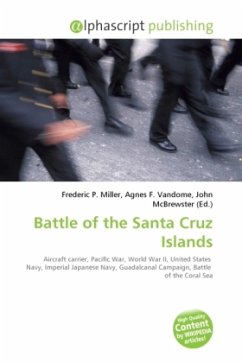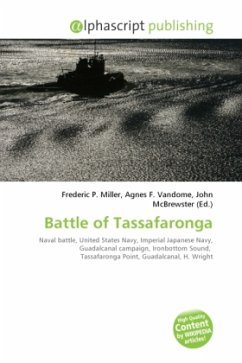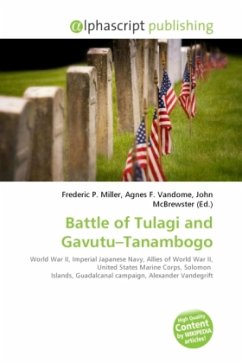
Battle of the Santa Cruz Islands
Versandkostenfrei!
Versandfertig in 6-10 Tagen
39,99 €
inkl. MwSt.

PAYBACK Punkte
20 °P sammeln!
The Battle of the Santa Cruz Islands, October 26, 1942, sometimes referred to as the Battle of Santa Cruz or in Japanese sources as the Battle of the South Pacific, was the fourth carrier battle of the Pacific campaign of World War II and the fourth major naval engagement fought between the United States Navy and the Imperial Japanese Navy during the lengthy and strategically important Guadalcanal campaign. In similar fashion to the battles of Coral Sea, Midway, and the Eastern Solomons, the ships of the two adversaries were rarely in direct visual range of each other. Instead, almost all atta...
The Battle of the Santa Cruz Islands, October 26, 1942, sometimes referred to as the Battle of Santa Cruz or in Japanese sources as the Battle of the South Pacific, was the fourth carrier battle of the Pacific campaign of World War II and the fourth major naval engagement fought between the United States Navy and the Imperial Japanese Navy during the lengthy and strategically important Guadalcanal campaign. In similar fashion to the battles of Coral Sea, Midway, and the Eastern Solomons, the ships of the two adversaries were rarely in direct visual range of each other. Instead, almost all attacks by both sides were mounted by carrier or land-based aircraft. In an attempt to drive Allied forces from Guadalcanal and nearby islands and end the stalemate that had existed since September 1942, the Imperial Japanese Army planned a major ground offensive on Guadalcanal for October 20 25, 1942. In support of this offensive, and with the hope of engaging Allied naval forces, Japanese carriers and other large warships moved into a position near the southern Solomon Islands.












